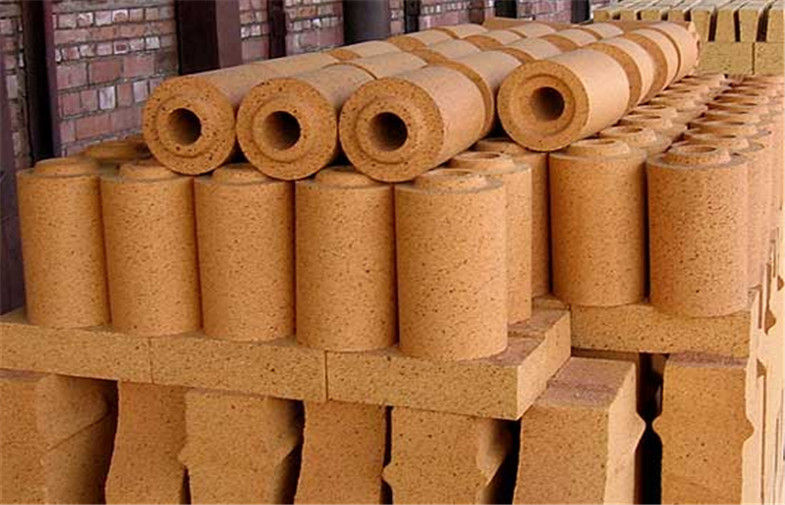Product Search
Quickly find the product you need
Products List
Refractory Knowledge
- Pollution and treatment in the production
- Pros and cons of lightweight mullite bric
- the development of the refractory brick i
- Production Process Methods of Refractory
- Classification of mullite insulation bric
- The Use of Mullite Insulation Bricks
- Manufacturing process of fire clay insula
- Refractory material production process
- Aggregates Used For the Production of Ins
- Thermal Shock Resistant Fireproof Heat In
Products List
- Phone:0086-370-63838939
- Email:sales@sunriserefr.com
- Office Address: No.36 Fengchan Road Of Zhengzhou, Henan, China (Mainland)
What Should be Paid Attention to Refractory Brick for Flue?
Date:2020-05-12 10:35 | From:Zhengzhou Sunrise Refractory | Author:admin
The flue is one of the important parts of the kiln. The flue refractory brick needs to be insulated and resistant to high temperatures. Therefore, this part is usually used in combination with refractory materials and thermal insulation materials, of which refractory materials can use clay bricks or high alumina bricks.
Clay brick for flue refers to clay products with aluminum silicate material with Al2O3 content of 30% to 40%. Soft clay of 50% and hard clay clinker of 50% are used. Ingredients with a certain particle size are required to be batched. After molding and drying, they are fired at a high temperature of 1300 to 1400 ° C. They are weak acid refractory products, which can resist the corrosion of acid slag and acid gas, and have a slightly poor resistance to alkaline substances. , It has the characteristics of good thermal performance, resistance to rapid cooling and heat.
Precautions for the use of flue refractory bricks
Matters to be noted when building, first of all, the special-shaped clay refractory bricks for flue, ordinary clay refractory bricks and cement expanded perlite bricks, the shape should be checked and accepted block by block, and should be accompanied by the factory certificate and the prescribed test single. Secondly, the clay cement and other powder materials used for the construction of the flue should be stored in a covered warehouse, and it is strictly prohibited to be flooded by rain. Clay refractory bricks can be stored in the open air, but should be covered with rain and waterproof measures.
Again, the refractory bricks should be arranged in the order of construction, and stacked on the brick stacks according to large, medium and small tolerances, and a sign should be set up. The label should indicate the brick number, quantity and tolerance of the brick stack. Clay clinker and combined clay should be placed in different varieties and grades. Strictly separate to prevent confusion. Therefore, pay attention to these matters when using refractory bricks in the flue to ensure the reasonable and proper use of refractory bricks.

Matters needing attention in the construction of refractory bricks for flue
1.The pipe lining should be built with the shell as the guide surface. When there is a spray coating in the tube shell, the spray coating should be rounded, and the masonry should be used as the guide surface.
2.The pipeline lining can be built or poured in sections on the ground. Welding space should be reserved at the connection of the pipeline. After installation, it should be repaired or poured in time. When the diameter of the pipeline masonry is less than 600mm or the rectangular section is less than 500mm × 600mm, it should be masonry or pouring on the ground in sections, and the length of each section should not exceed 3m.
3.The inner lining of the annular pipeline shall be built in sections with the shell as the guide surface, and the joints of the inner lining of each section shall be built into straight seams.
4. Refractory castables or composite bricks should be used at each branch of the pipeline.
Construction specifications of flue refractory bricks:
1.The chimney vaults should be built with staggered joints, and the vaults with complex shapes can be built with rings.
2.The refractory mud used in underground flue masonry can be mixed with ordinary Portland cement with a mass ratio of 10% to 20% and a strength level of not less than 32.5.
3.The vault of the underground flue without concrete wall can only be built after the backfilling of the flue wall is completed. When the chimney wall is tall or thin, the chimney wall shall take measures to prevent dumping inwards.
4.When constructing the masonry near the flue gate, a gap should be left as designed. The upper surface of the base of the revolving gate should be higher than the upper surface of the bottom of the flue.
5. When the flue gate has a frame structure, the masonry near the gate should be masonry after the frame is installed and positioned. The refractory bricks in contact with the frame should be processed. When the gap between the two is not specified in the design, it should be filled with thick refractory mud of the corresponding material.

